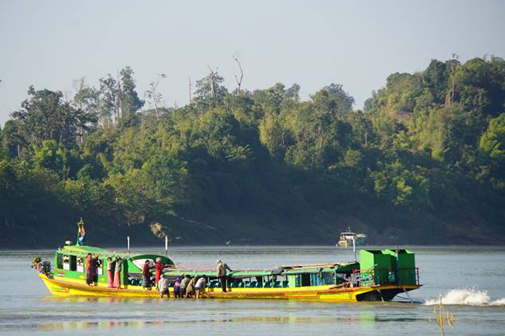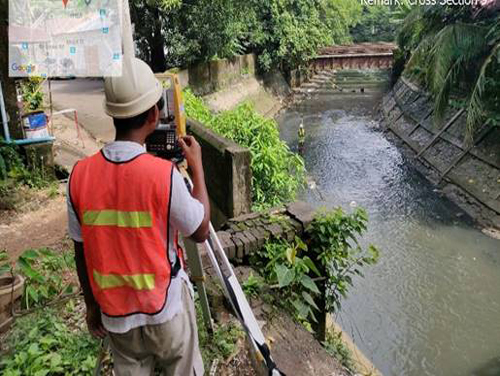
The Chindwin river basin suffers from illegal mining and deforestation activities, affecting the natural balance of the system and navigability of the river. People living along the Chindwin rely heavily for transportation on the Chindwin and the river itself has many challenges in socio- economic issues. However, The Chindwin River has high potential to promote new opportunities for developments by improving the navigation route connecting the north-western part of Myanmar.
Water Bridge Myanmar and Royal HaskoningDHV carried out together a screening and scoping of possible environmental and social impacts of a proposed ferry line in which 10 to 20 specialized, very shallow draft passenger ferry vessels will be provided to the Myanmar Government. The ferry line intends to create all-year-round, safe and reliable public transport on the Chindwin in Myanmar. The vessels are optimised and designed to allow the operation to be done by the Department of Inland Water Transport. The assignment is to assess the Environmental and Social Impacts (ESIA) on the proposed Project, following the Myanmar procedures and the requirements of the International Finance Corporation (IFC). The tasks also cover to help the client to provide more insights in sustainability and inclusivity of the project in creating a new safe, fast ferry boats with a shallow draft and implementing limited dredging at some locations to guarantee sufficient draft also in the dry season.


Yangon city is experiencing of flood hazards. Future urbanization of the country and also sketched climate change scenarios are expected to increase flood risk in the city. Basically, two types of floods occur in Yangon city. The first are floods that originate from high water levels in the river and coastal system. i.e. fluvial floods. The second type of flooding is flooding due to heavy precipitation, i.e. pluvial floods. Apart from those hazard sources, the city itself have many challenges in drainage system such as waste accumulation, informal settlements on the top of drainage canals, obstacles obstructing the flow, sedimentation of the canals, design limitation of the drainage system and limited maintenance etc. A start should be made with Integrated Flood Risk Management by the Yangon authorities as currently the authorities are working parallel to each other. The Yangon Flood Model and Flood Risk Model developments for Yangon city can function as an integrating factor to improve the collaboration between these authorities.
The Dutch Organization RVO funded and supported YDCD to develop a flood hazard and risk model for Yangon city. Royal HaskoningDHV awarded the assignment and Water Bridge Myanmar mainly involved in the project context of data collection and management, capacity building programs and stakeholder and technical workshops facilitating both Myanmar and the Dutch water experts. The main scope of works concerns the development of a Flood Hazard Model and Flood Risk model for Yangon urban area including 24 townships. The model will result in flood hazard maps and flood risk maps for different return periods. These will provide the necessary information on the existing flood risk maps for different return periods. These will provide the necessary information on the existing flood risk of Yangon City as well as the expected flood risk for the future scenarios that include climate change.



Mandalay City Development Committee (MCDC) is preparing an agreement with the Dutch DRIVE-program and a loan from Dutch banks for the Pyigyitagon Water Supply Project (around €60 million) to be executed by a consortium led by Ballast Nedam International Projects (BNIP). The Pyigyitagon Water Supply Project consist of a raw water intake from the river, a water treatment plant, a transport main of 13.5 km, a water storage reservoir and booster pumping station, a piped network of approximately 273.5 km and a total of 20,000 connections to households and industries in Pyigyitagon Township in Mandalay. Water Bridge Myanmar assisted the clients MCDC, RVO, and Ballast Nedam in all stages of project initiatives to realization. Now, the project has been approved by the Pyithu Hluttaw and starts calls for EOI for supervision. The Water Bridge Myanmar also served as the main procurement consultant for the clients.